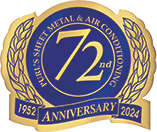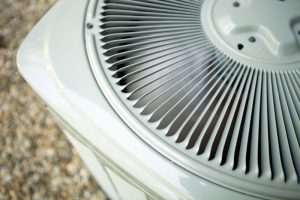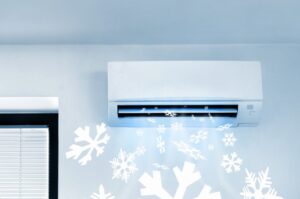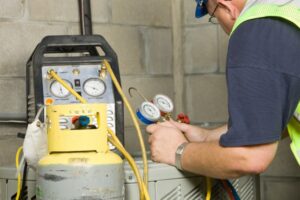As spring arrives, it’s the perfect time to assess your home’s heating and cooling system. If your HVAC unit is struggling to keep up or causing your energy bills to climb, investing in a new system can make a world of difference. At Purl’s Sheet Metal & Air Conditioning, we’re here to help you enjoy a more comfortable and energy-efficient home. Plus, right now is the ideal time to upgrade—you can take advantage of Carrier Cool Cash when you purchase a new system by June!
Purl's Sheet Metal & Air Conditioning Blog: Posts Tagged ‘Air Conditioning Installation’
Refresh Your Home HVAC Comfort in March
Monday, March 3rd, 2025The Future of AC Refrigerants: What Comes After Puron?
Monday, June 10th, 2024As the HVAC industry continues to evolve, one of the biggest changes we’ve seen over the past few decades is the change in air conditioning refrigerants: R-22 (commonly known as Freon) was replaced by R-410A (known as Puron). This change was driven by the need to reduce the environmental impact of air conditioners, as R-22 is a hydrochlorofluorocarbon (HCFC) that depletes the ozone layer. Puron, on the other hand, is a hydrofluorocarbon (HFC) with no ozone depletion potential, making it the more environmentally friendly choice.
However, as technology and environmental standards advance, it’s a good time to ask: What comes after Puron?
The Benefits of Ductless Mini Split Systems
Monday, July 11th, 2022Ductless mini split systems are a type of comfort system for homes that work through a series of wall-mounted air handlers. Think of one of these systems as similar to a standard split system air conditioner, except the condenser doesn’t connect to a single indoor blower and evaporator hooked to ductwork. Instead, it connects to a series of separate mini-air handlers/evaporators placed throughout the rooms.
What are the key benefits of installing a ductless mini‑split (heat pump) system?
- Provides both heating and cooling, since many models are heat pumps
- Eliminates the need for ducts, reducing energy losses from leaks or poor insulation
- Enables zone control, different rooms can be managed separately
- Improves indoor air quality by avoiding duct-related dust and allergens
- Offers flexibility for homes without existing ductwork or in remodels/additions
We offer installation of ductless heating and ductless air conditioning Fresno, CA. These systems aren’t ideal for all homes, but their benefits make them attractive options if you’re planning on making upgrades or changes to your HVAC system or if you live in an older home lacking ductwork.
Here are a few of the best benefits of ductless mini splits…
Understanding SEER, AFUE, and Other Efficiency Ratings for HVAC Systems
Monday, March 7th, 2022Spring is approaching, and this is a time of year when many homeowners start to consider what upgrades or replacements they might need for their heating and air conditioning systems. You may have just gone through a winter with a furnace that was underperforming because of its age. Or you might know that your current air conditioning system isn’t up to handling another summer in the Central Valley.
You’ve come to the right people when it comes to great AC and heating in Fresno, CA. Our team can guide you through the process of replacing an older system if that’s the best choice for your house. One tricky part of getting a new HVAC system for homeowners is understanding the different efficiency ratings and what they mean. We’ll run down the three major ones you’ll need to know for heating and air conditioning.
AFUE
This is a rating used for furnaces. It stands for annual fuel utilization efficiency, and it’s expressed as a percentage. The percentage tells you how well a furnace converts its energy supply into heat. A gas furnace with 90% AFUE will turn 90% of the natural gas it burns into heat for the home, and the remaining 10% will escape the furnace as exhaust.
As of 2013, the minimum requirement for a furnace to receive the ENERGY STAR label from the Department of Energy is 80% AFUE. Many furnaces will score higher than this. High-efficiency condensing furnaces can have AFUE ratings in the high 90s, but they cost more to install. All electric furnaces have AFUE of 100%, but that’s because they don’t lose heat to exhaust. Electric furnaces will still cost more to run on average than gas furnaces because electricity is a more expensive energy source.
SEER
SEER (seasonal energy efficiency rating) is used for air conditioning systems and heat pumps when in cooling mode. It’s the ratio of the amount of heat a unit removes from the air in BTUs to the amount of electricity consumed in watt-hours, as measured over a full season of cooling. (There’s another rating, EER, which is done with only a single test.) The higher the SEER rating, the more efficient the unit. The current ENERGY STAR requirement for air conditioners and heat pumps is SEER of 14.5 or higher. High-efficiency units, such as variable flow refrigerant air conditioners, can have SEER in the 20s.
HSPF
This is a rating specific to heat pumps. Heat pumps work in two modes, heating and cooling, and have different ratings for those modes: SEER for cooling and HSPF for heating. HSPF stands for heating seasonal performance factor and is the ratio of the amount of heat brought into a house in BTUs to the amount of electricity consumed in watt-hours, measured over a full season of heating. HSPF is always lower than SEER for a unit, as heat pumps are less efficient in heating mode. The ENERGY STAR minimum for HSPF is 8.5.
The efficiency of any new system you have installed is important, but it isn’t the only factor. You’ll want the help of our professionals to find the ideal unit to provide comfort to your house as well as energy savings.
Call Purl’s Sheet Metal & Air Conditioning when you’re interested in a new HVAC system installation. Uncompromised Quality & Customer Service Since 1952.
Getting a Bigger AC Is Probably Not a Good Idea
Monday, October 4th, 2021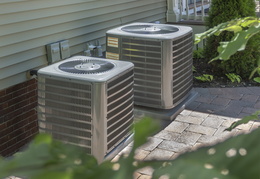
We’re accustomed to thinking that getting an appliance that’s “more powerful” is always for the best. But this isn’t the case—and it’s certainly not the best when it comes to a central air conditioning system.
Maybe you’re unhappy with your current air conditioning in Fresno, CA. This recent summer was hot, and when you lowered the thermostat to your standard comfort level, you didn’t feel as cool as you expected. The air conditioner just didn’t seem like it could handle the heat. Getting a bigger AC might sound like a good solution; it seems sensible. But it rarely is. If the issue stems from heat strain on your existing unit, it’s better addressed through proper maintenance or sizing not more power.
What Is “Puron” and Is It Different From Freon?
Monday, May 3rd, 2021When you’re looking for a new air conditioning system installation in Fresno, CA, you’ll have many questions about cooling power, energy efficiency, and cost. There’s plenty to consider when planning for a new cooling system, and you want to make sure you get the right air conditioner. We recommend you work with our professionals from the start so we can answer your questions and ensure you have a properly sized new AC.
The question of what “Puron” is and how it’s different from Freon we can answer here. The word “Freon” tends to get tossed around interchangeably, leading to confusion about refrigerants. We’re happy to clear things up.
Cool Cash Fall Rebates for 2020
Monday, August 17th, 2020Save up to $1650 in rebates on qualified Home Comfort Systems by Carrier. Purl’s Sheet Metal & Air Conditioning is a Carrier Factory Authorized Dealer in the Central Valley since 1952. We are proud to announce the Carrier Cool Cash Rebates begin August 17 th ,2020.
Fall is a great time to replace or upgrade your air conditioning and heating system in your home before the summer ends and the cold weather begins. When you replace your older system with new more efficient equipment you can see monthly energy cost savings immediately. It is a great time to take advantage of fall rebates before the extreme weather begins in the Fresno and Madera, CA.
Purl’s Sheet Metal & Air Conditioning has been serving Fresno, Madera and the Central Valley since 1952. We offer free estimates for replacement units and new installation with a 100% satisfaction money back guarantee. We pride ourselves on excellent customer service and a quick response time. Call Purl’s Sheet Metal & Air Conditioning and ask about FALL Cool Cash savings today.
Adding Central AC to a Home: What You Should Know
Wednesday, May 15th, 2019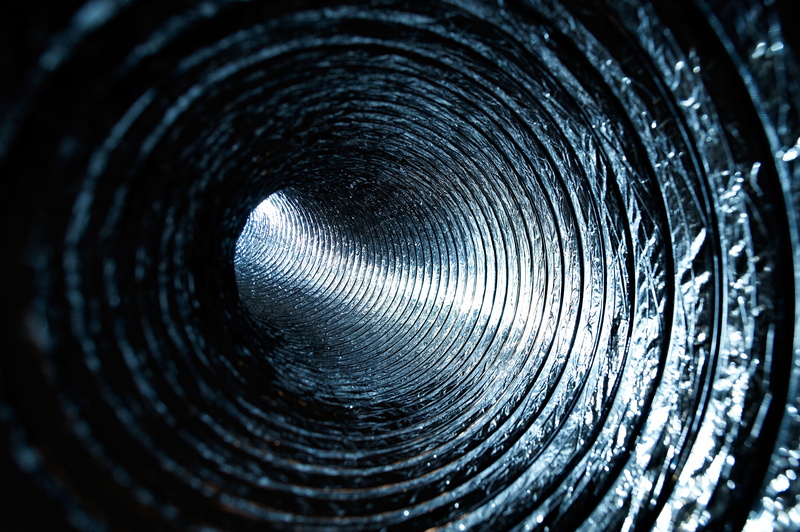
Residential central air conditioning has a long history going back to the 1920s. But many decades would pass before central AC systems became common and affordable for homeowners. Today, 90% of new houses are constructed with central air conditioning systems, which is a significant change from only twenty years ago.
The central air conditioning system has replaced the old window units that were once the main way for homes to enjoy cooling. Window units have a limited use, conditioning only small areas. They’re also unattractive-looking, block light, and make a home less secure. All around, central air conditioning is the superior choice for a home, and it also allows for indoor air quality improvement additions through better airflow management.
Spotting Heat Emergencies (And a Filter Reminder!)
Tuesday, August 14th, 2018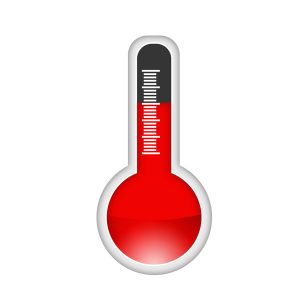 We’re currently experiencing triple-digit weather here in the Central Valley—and this can make a faulty air conditioner a critical emergency! Weather this hot can lead to major health problems, such as heat stroke and dehydration, that can be life-threatening if emergency steps aren’t taken. We have a few tips for spotting heating emergencies during this time to help keep you safe.
We’re currently experiencing triple-digit weather here in the Central Valley—and this can make a faulty air conditioner a critical emergency! Weather this hot can lead to major health problems, such as heat stroke and dehydration, that can be life-threatening if emergency steps aren’t taken. We have a few tips for spotting heating emergencies during this time to help keep you safe.
Watch for heat stroke: Heat stroke (aka sunstroke) is when the body overheats beyond 104°F. It’s a medical emergency that can cause damage to the nervous system if not treated, so if you suspect you or someone near you has it, call 9-1-1 immediately. It’s most dangerous for people over age 50. Fortunately, heat stroke doesn’t hit all at once: there’s a progression of symptoms you may notice that can give you advanced warning. Watch for people who seemed confused, disoriented, feel nauseous or are experiencing vomiting and trouble breathing. Watch out for these signs in yourself: throbbing headache, dizziness, weakness, and muscle cramps.
Dehydration: You’re always losing water from your body, but you usually replace it by drinking and eating. But extreme heat can lead to losing water faster than it’s replaced. Mild dehydration is common and not a serious problem—just drink some water! But major dehydration during brutally hot days will cause dizziness, fast heartbeat, rapid breathing, fainting, rough skin and chapped lips. As with heat stroke, this is a medical emergency that needs treatment, not just water!
Please Remember to Change Your Air Filter!
The Yosemite fire has brought a steep drop in the air quality in our area. Because of the amount of smoke in the air, the air filter in your home’s HVAC system is going to get dirty extremely quickly. If you usually change your filter every few months, we strongly urge you to change it now, no matter what your regular schedule is. This isn’t just our recommendation, either! The CDC urges regular changing of the air filter to prevent the circulation of outside smoke through your home during times of major fires.
If you need AC help to get through this intense summer weather, or you’re looking for indoor air quality assistance, call on Purl’s!
Purl’s Sheet Metal & Air Conditioning: Quality Is the Cornerstone of Our Success Since 1952!
The Benefits of Zone Control
Monday, July 17th, 2017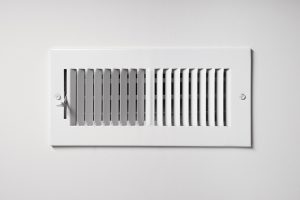 One of the services we offer our customers is complete zone control installation and replacement. A zone control system allows a homeowner to manipulate which parts (“zones”) of a home receive conditioned air from the heating and air conditioning system.
One of the services we offer our customers is complete zone control installation and replacement. A zone control system allows a homeowner to manipulate which parts (“zones”) of a home receive conditioned air from the heating and air conditioning system.
The standard HVAC configuration in a home distributes conditioned air to every room connected to the ventilation system—regardless of whether the room requires climate control or not. This is convenient, but not exactly practical. Imagine having every light in a house come on when one switch is flipped. True, all the areas that need light would have it. But all the areas that don’t need light would also have it, and that’s a huge energy waste.
Zone control is an effective tool to restrict airflow to empty rooms without creating air pressure spikes inside the ventilation system. (This is what happens if people attempt “zone control” by simply blocking or closing room vents.) The system uses a series of dampers fit inside the ducts that connect to a network of local thermostats and a central thermostat. Local thermostats can make requests for heated or cooled air, and the system adjusts the thermostats and the operation of the heating/air conditioning system to meet those requests.

